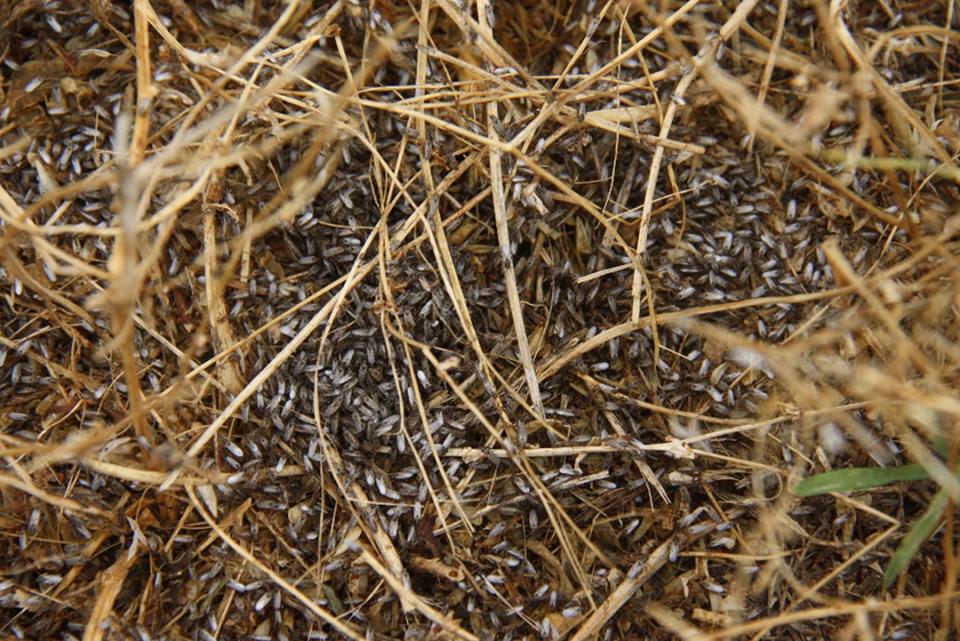
False Chinch Bugs Found in Nebraska
False chinch bugs have been found in large aggregations in several fields in Nebraska (Figure 1).
These insects typically feed on weeds, with a preference for mustard plants. When their preferred food source either matures or is removed by an herbicide application or mowing, the bugs can migrate to a variety of crops. Nebraska field crops that can be affected include alfalfa, field corn, soybeans, grain sorghum, forage sorghum, sugarbeets and potatoes.
Identification
Adult stage false chinch bugs are about 1/8-inch long. They are typically light gray in color with brown markings. The lower part of the bug’s wings are clear and when folded, a fairly-well defined “X” marking can be observed (Figure 2).
Nymphal stage false chinch bugs are similar in color but are smaller and do not have fully developed wings. False chinch bugs can be confused with true chinch bugs. True chinch bugs are larger and dark gray in color with white wings that have dark triangles on the margins (Figure 3).
Damage Potential
False chinch bugs lay eggs and grow through much of the summer, with peak numbers usually occurring in July and August. While true chinch bugs can be a serious pest of field corn and sorghum, false chinch bugs are usually considered an incidental pest. True chinch bugs will inject toxic saliva into plants as they feed, resulting in plant decline. False chinch bug saliva is not particularly toxic to crop plants, but wilting and feeding damage is occasionally noticed when a large number of the bugs feed on plants. For this reason, the economic thresholds for true chinch bugs are much lower than those for false chinch bugs. Unless crop plants are in a seedling stage and/or are drought-stressed, it would take an infestation of thousands of false chinch bugs per plant to require a control measure.
Management
Farmers should scout the edges of their fields for false chinch bugs. Large aggregations are most typically found in weedy areas on the edges of fields. They are more likely to be found among debris on the ground or on the lower stems and leaves of the plants.
These insects have been found to cause yield loss to pre-milk stage grain sorghum with them feeding on the developing heads. If false chinch bugs continue to be found in grain sorghum later in the growing season, they should be monitored by placing a head in a bag or bucket and vigorously shaking it. The number of bugs that are found should be counted. This procedure should be repeated for one plant per acre in different parts of a field on a minimum of 30 plants.
Control actions should be considered when an infestation in pre-milk stage grain sorghum of 140 bugs per head is reached. If populations exceed this management threshold, pyrethroid insecticides generally provide adequate control. See a list of registered crop-specific insecticides in the Guide for Weed, Disease, and Insect Management in Nebraska (EC-130).
Online Master of Science in Agronomy
With a focus on industry applications and research, the online program is designed with maximum flexibility for today's working professionals.


